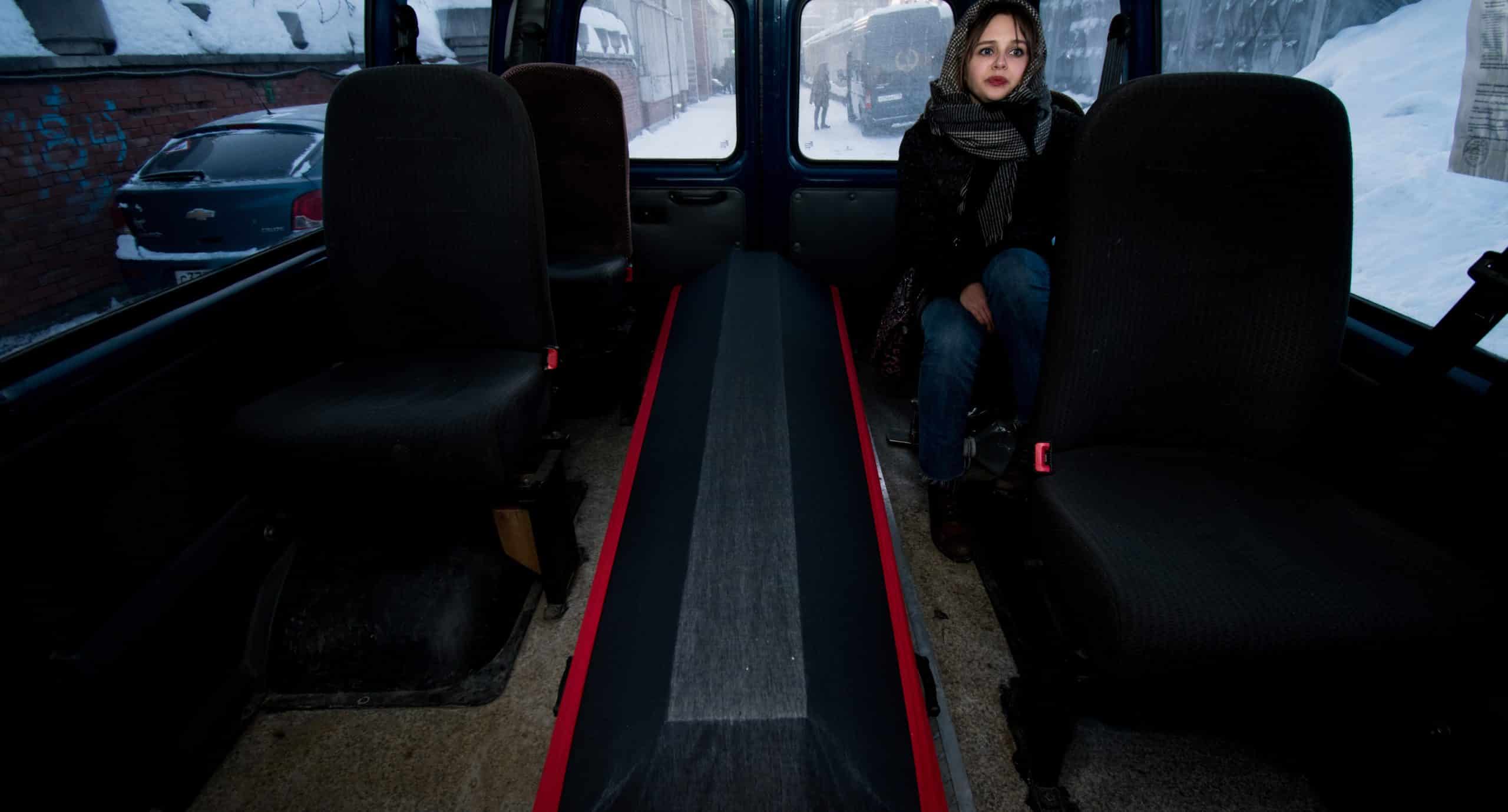
Hello. My name is Sasha Kovaleva, I am an artist.
Apart from my artistic projects, I also work as an illustrator and sometimes a graphic designer. I like to draw in every possible way, digital pairings, drawing on paper – anywhere! I am a fan of neuro network technologies, hopefuly someday I will be able to use AI for my graphics as well.
I am from Moscow and a city girl at heart. But when I was a little girl, we use to live in the countryside. It was a tough time for Russia, we are only at the beginning of understanding the scarring legacy of Perestroyka. I have a lot of bittersweet memories from that time of my childhood and thankfully, many of the happier ones are all around nature. Trees and fields and grass were my best friends as a child. I miss nature and hope someday I will be calm enough to live in the countryside again 🙂
“Digital immortality” and “postmortal diversity”
In a way, I have always considered myself as an artist, but when I was younger I wasn’t sure I could make it. So I took a different route: I graduated from Moscow State Law Academy and use to work as a lawyer for a few years. During that time, I also learnt from various fine arts contemporary art foundations, and somehow day by day I shifted to the artistic area for good. I haven’t looked back!
I am now working on a huge project about the digital representation of a human. I want to try and answer the question: Can digital immortality be our future? The project is complex in a technical way and I am currently looking for a partner who can help me with it.
I have also started an Instagram account about alternatives to traditional burial, “postmortal diversity“, as I call it. I have lots of new pictures which I will be posting there!
This led me to meet someone who has since changed my life forever: Vadim.
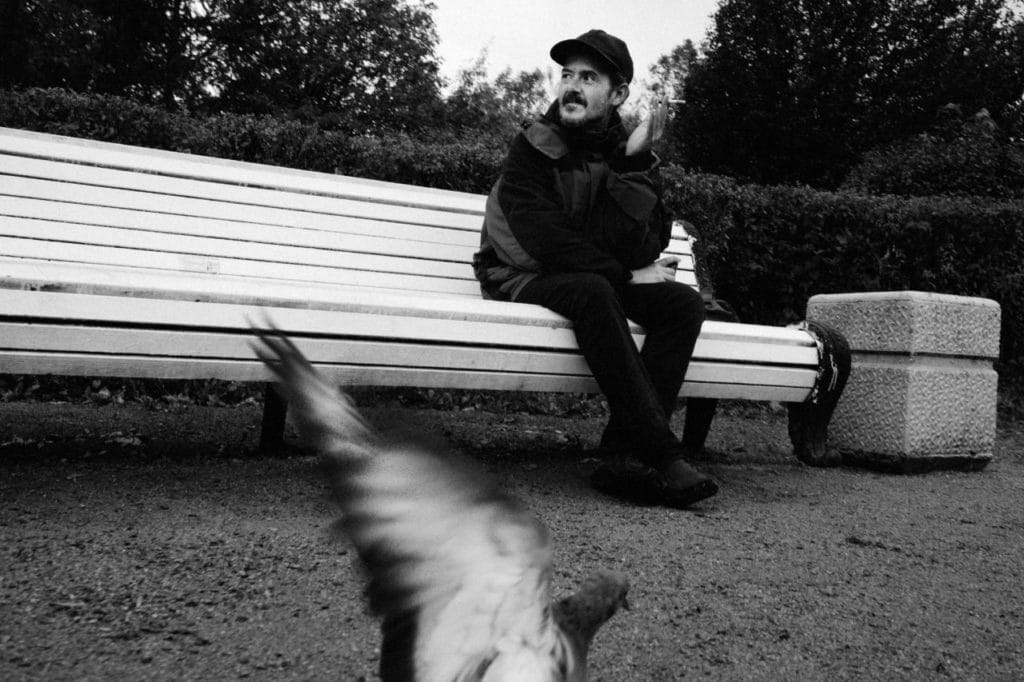
Portrait of Vadim as featured in his interview for Takiedela publication. Photo: Sergey Stroitelev for TD
Vadim‘s enthusiasm for life, even when faced with hardship and death
Vadim was a homeless man. I met him in a shelter when I was working on the project. My friend and photographer Artem Leshko introduced me to a lovely couple who have found Vadim in the street when he was very ill. He had liver cancer.
They helped him to first get into a shelter and later into a hospice. They liked my project and introduced me to Vadim who was facing his own mortality. I had actually met him before, as a volunteer in the shelter, and I assisted doctors appointments with him, but it was never enough time to talk and I only discovered his life story until later – I will always be grateful we got this chance to truly get to know each other.
Vadim liked the project and decided to participate in it. I visited him very often, and we talked a lot about everything – design, art, cats, death. He used to be a graphic designer and creator too, living free and careless life, travelling and floating from city to city.
He was diagnosed with cancer too late, with no insurance or savings. This led him to becoming homeless. An artistic freelancer with terminal cancer, he never lost the sparkle in his heart even when he was living in the street.
Maybe that’s why he attracted people to him ad gathered attention. So that you can get an idea of his positive attitude in life, he told journalist Svetlana Lavrentieva, who wrote an article about his life: “My favorite film? Knockin ‘on Heaven’s Door of course!”. The movie is about two terminally ill patients who escape from a hospital, steal a car and embark on an adventure. “So I’ll move to my new hospice, put together an escape team and hitchhike to Baikal, just like they did!” he joked with the journalist.
Accompanying Vadim in his death
Vadim never complained, even when the pain becomes unbearable. He tried to work untill the very end on design. His biggest regret in life was that he no longer had a kitchen: cooking was another of his biggest passion. And cats. He loved cats and cats adored him! His beloved cat Dostoevsky went to live with Vadim’s then-girlfriend.
In his final weeks, he kept telling me that the hospice reminded him of Japan – even though he had never been – because it was winter and there were many small pine trees all around. So we started calling him Samurai, but really it wasn’t because of that, it was because of his endless courage.
Vadim passed away in January 2019 in the hospice. I asked him if we wanted to become a tree before he passed and we said yes. I became the person responsibe for his ashes and organise the funeral ceremony. Myself and three friends of ours were present. In the main photo, you can see me travelling with his coffin.
For Vadim’s funeral ceremony we tried to make it as personal as possible, although there isn‘t currently much flexibility on a traditional ceremony. We asked to have his favorite music playing – we played all the song’s that Vadim loved and that listened together in the hospice. That is not a very common here. The casket was closed during the ceremony because for me it was important to organise the funeral with minimum cost. My friend Nadezhda and I drew beautiful big pictures of Samurais for Vadim which we gave to him. And at the beginning of the ceremony, a cat came in! That was like a little miracle for us, it was definitely a sign for me!
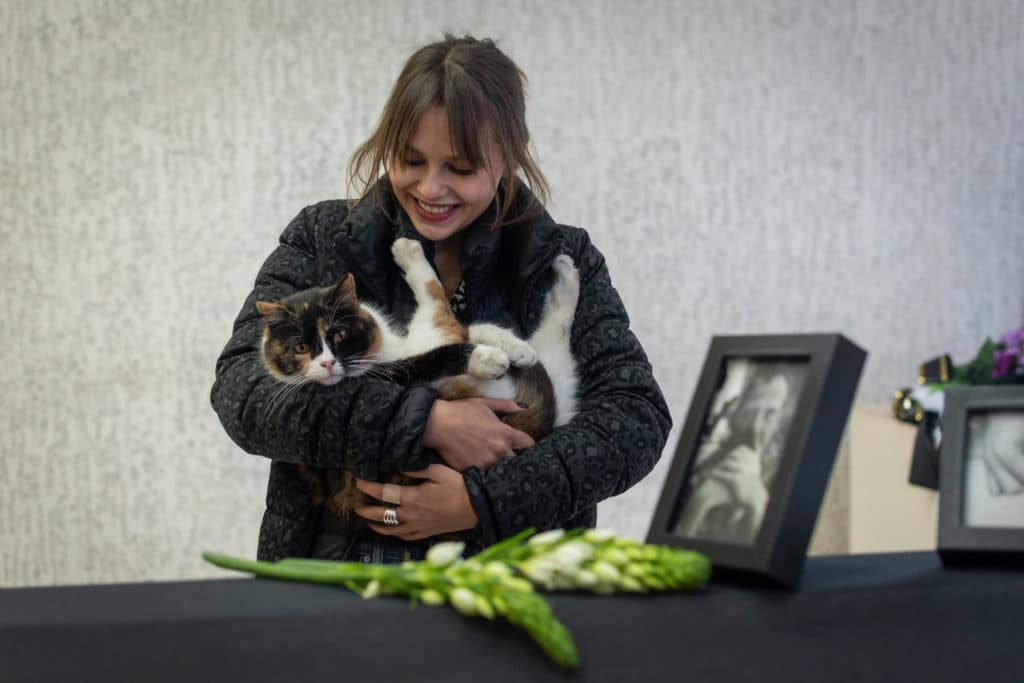
At the beginning of the ceremony for Vadim, a cat came in! It was definitely a sign for me! Photo: @next.station.transformation on Instagram
In fact, after the ceremony, I wrote a guide on how to organise a funeral with minimal costs which is now used by social workers and volunteers in Saint-Petersbur when working with people in need. I personally know of that a group of homeless people who buried their friend using this guide to help them navigate the funeral ceremony costs. People are just not aware that they can organize most things for free.
Death in Russia
The Orthodox church in Russia is against cremation. There very few crematoriums here and we have a lot of land, making the traditional inhumation burial the most widepread in this country. Having saif that, in big cities such as Moscow and Saint-Petersburg, cremation is quite popular. Cremation represents around 53-54 % of all burials in Moscow, and even more in Saint-Petersburg – approximatly 65 %.
Now due to the COVID pandemic, cremation has become even more popular reaching 70-72 % of all burials in these cities.
After cremation, the ashes are usually placed in a non-biodegradable urn which is then buried in a grave, so not a very eco-friendly option. It is however a lot cheaper – up to 3 urns can be buried in a single grave.
I don’t believe that there are any green cemetentires or natural burial grounds in the whole of Russia, nothing like the Bios Park ®.
My artistic project on death with a Bios Urn ®
I have bee working on this study of death from an artistical point of view for 6 years now. I am very interested in alternatives to traditional burials. The heart of my project is a tree grown from ashes, and I knew that Bios Urn ® is the leader in this area.
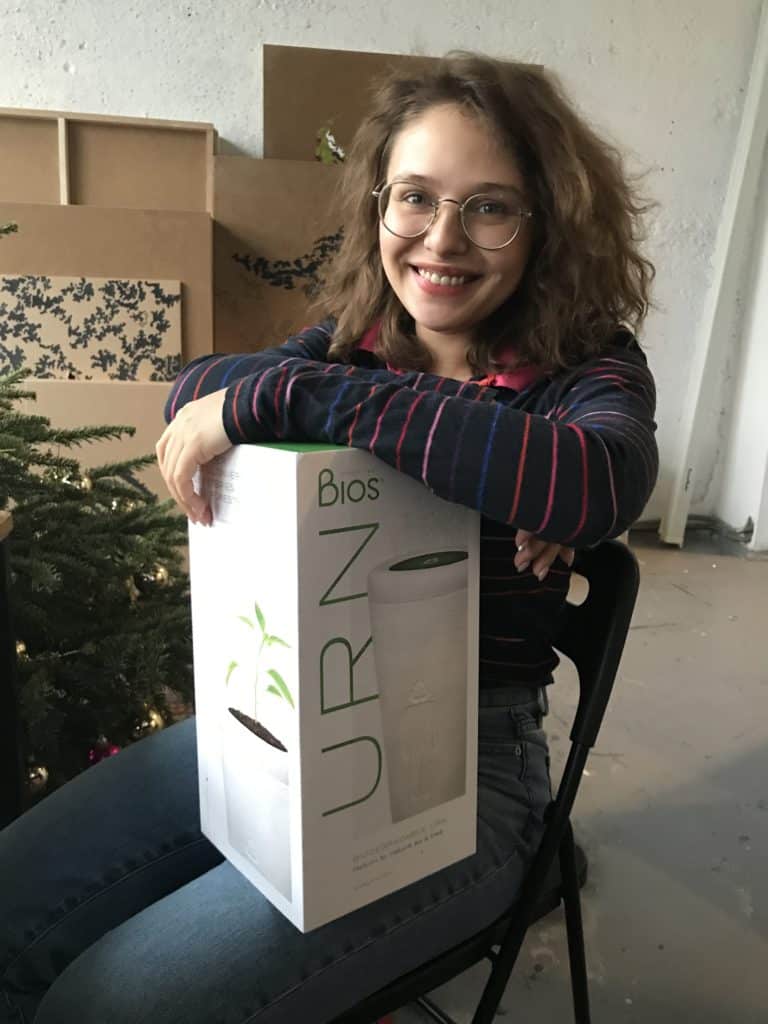
I have since ordered a Bios Urn ® and I will plant a beautiful oak tree with Vadim’s ashes. Photo: @next.station.transformation on Instagram
And I must admit that I am in love with it’s design. This is how I imagine the funeral industry of the future.
I have ordered a Bios Urn ® and I will plant a beautiful oak tree with Vadim’s ashes – this was the tree species he chose to become. Because I would like Vadim to be an example of the future of the funeral industry as part of my artistic project, I would like to plan the urn in any museum’s garden. It doesn’t necessarily have to be in Russia, just wherever it is possible. According to the Russian law, all human remains should be buried in a cemetery or in a columbarium (athough the plantation of a biodegradable urn remains somewhat unclear as there is nothing on this subject in the legislation of the Russian Federation as is the case in many other countries – it is quite a modern concept). At the same time, we do have precedents of different burials such as the burial of famous Russian writer Boris Strugatskiy and his wife. Their ashes were dispersed of in Saint-Petersburg.
“Pushing up the wild daisies”
This led me to want to become a spokesperson for the homeless and their right to a dignified death.
So I created another aspect to my digital immortality artistic project called “Pushing up the wild daisies”.
Meeting Vadim and seeing his own personal experiences was in many ways life-changing as it gave me so much emotional energy to continue the project with all my heart. I put a face and a name to the hundreds of homeless people who had passed before him. Meeting him and his contribution literally gave a living heart to the project, made it alive and sincere.
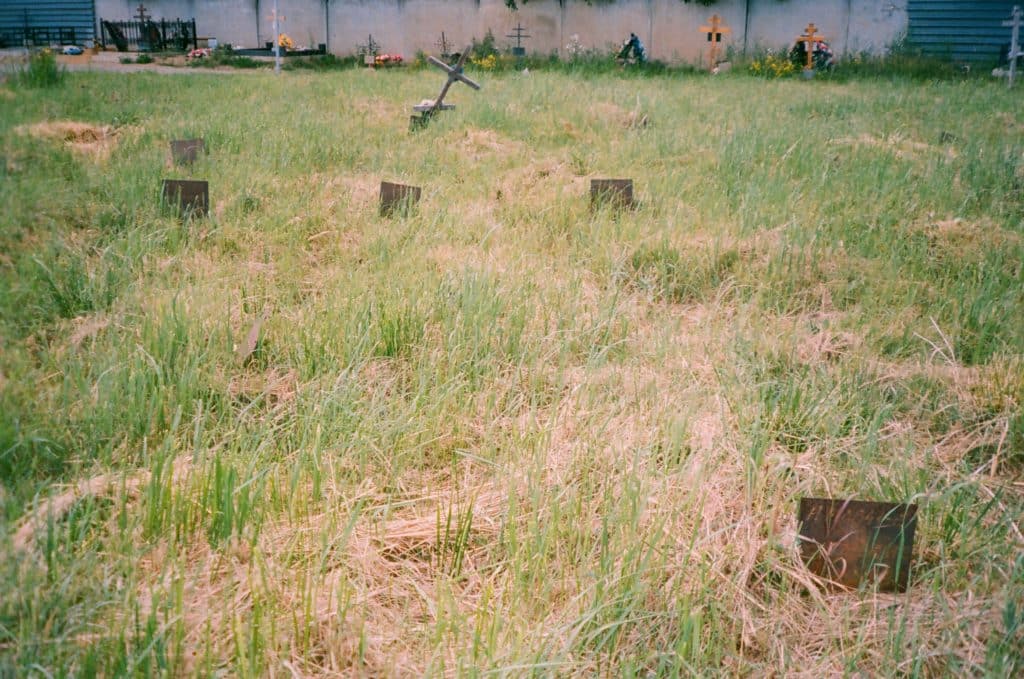
In Moscow, the unclaimed bodies of the homeless arrive in plain coffins at sites like the one pictured specially designated for them. If they can, they are named, if not their are simply numbered. Photo: @next.station.transformation on Instagram
We try to weld and pass our attainments to future generations. Memory is the means that serves for our further development. But we know nothing about burial of the homeless. This part of our reality is completely not on our radar.
The objective of the project is to try and change the current situation and create a discussion that may help work out a relevant approach to the problem, hopefully in collaboration with Bios Urn ®. This project is currently supported by a series of organizations such as Nochlezhka (the oldest registered charity that helps the homeless in Moscow and St Petersburg), Charity Hospital (a group of doctors who provide medical assitance to the homless), Maltese Help Service (a shelter) as well as Friends In The Street (a volunter movement and organization in support of the elderly and the homeless).
In my dreams, we will have a small grove with trees planted with a biodegradable urns with the ashes of homeless people in every big city. There would be no memorial stronger and more touching for them. I am currently in talks with various museums to expose this project, create awareness and make this dream a reality in a first city in the world.
As for my own end-of-life plans…
When I die, I would like to leave my remains to artists – someone like me, who could use it for their work. It is very important to discuss our life and death, I think.
If they choose to plant me into a tree, I would like to grow as a Golden Rye, because there is nothing more beautiful and calm. I am very petite (150 cm) and to be honest I can hardly imagine myself as a big tree, the views up there must be breath-taking 🙂
So what do you think of Sasha´s artistic project on digital immortality and natural death? Has her story impacted you in any way? We would love to hear from you in the Comments section below!
To keep up to date with all the latest Bios Urn ® news and stories, you can follow us on Facebook, Instagram, Twitter, Pinterest and YouTube!
Join our mailing list to keep you updated of all Bios® news and get a 10% Discount!





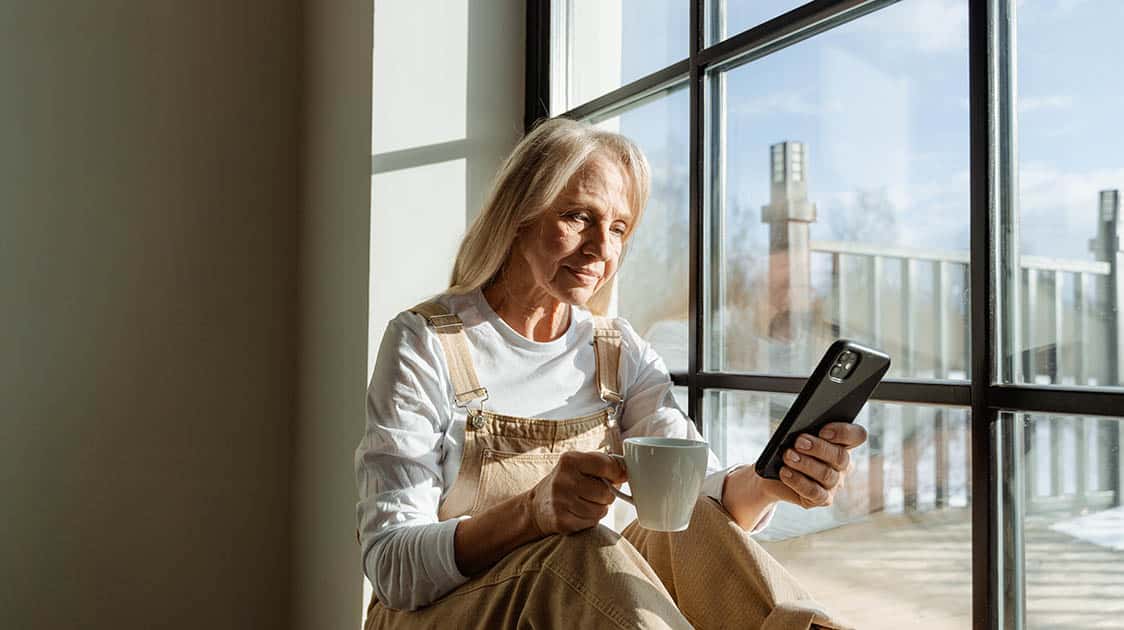
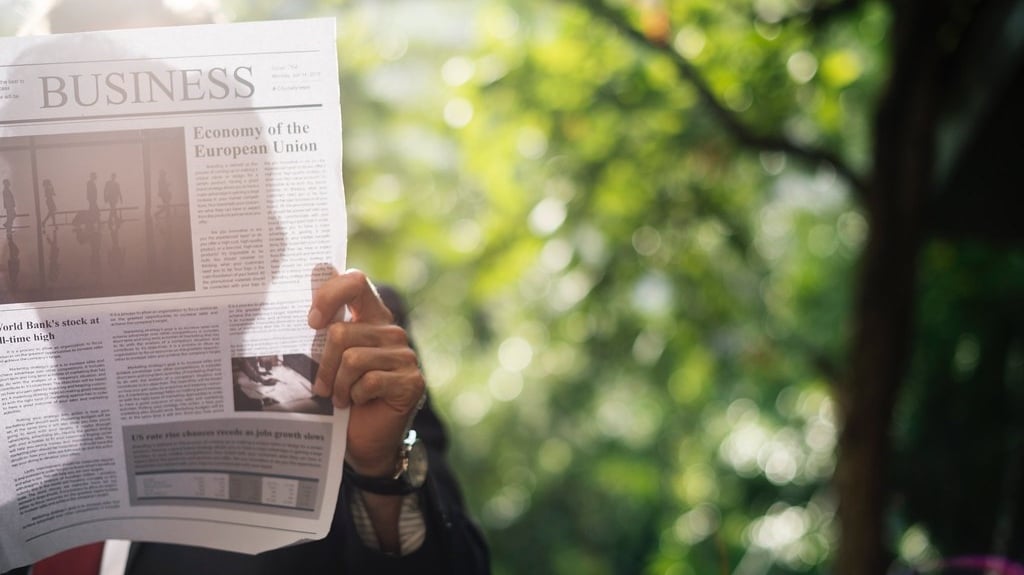
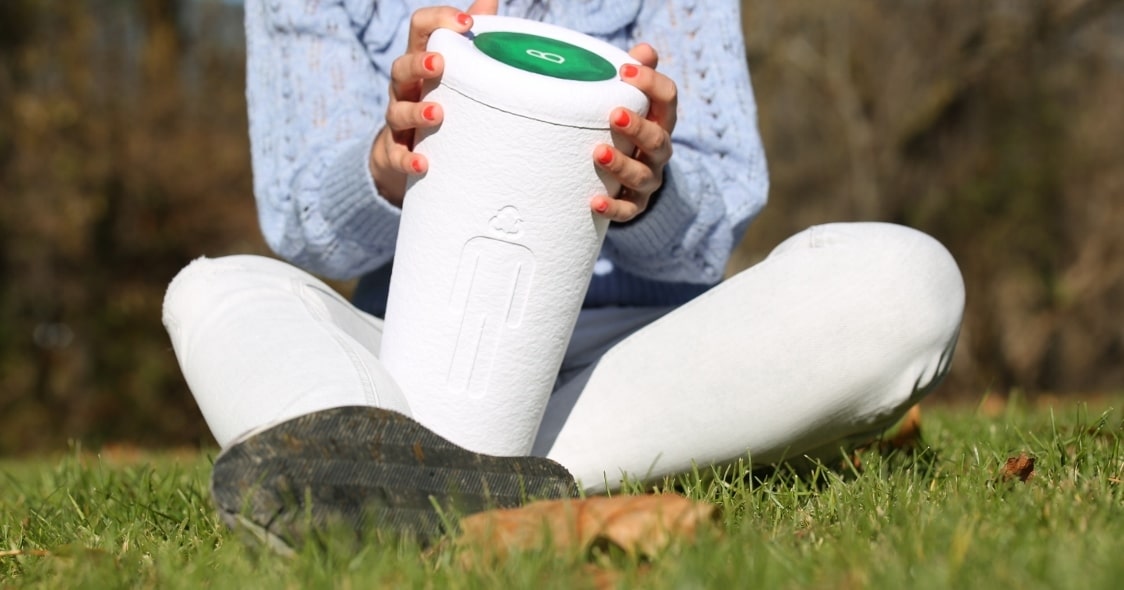
What a beautiful story, and a beautiful human being. Bless her heart!
Indeed! Thank you so much for taking the time to reach out Verna. Take care
What a beautiful lady and a very special project. She is so right and I completely agree. I would rather we ended cemeteries and instead built forests full of our relatives ashes combined with trees where we could still hug them. So much more sustainable. Xx
She is definitely a special soul, we felt compelled to tell her story as it touched our hearts so much. And we share the same dream as you for the future of natural woodland cemeteries! Take care and thank you for sharing with us.